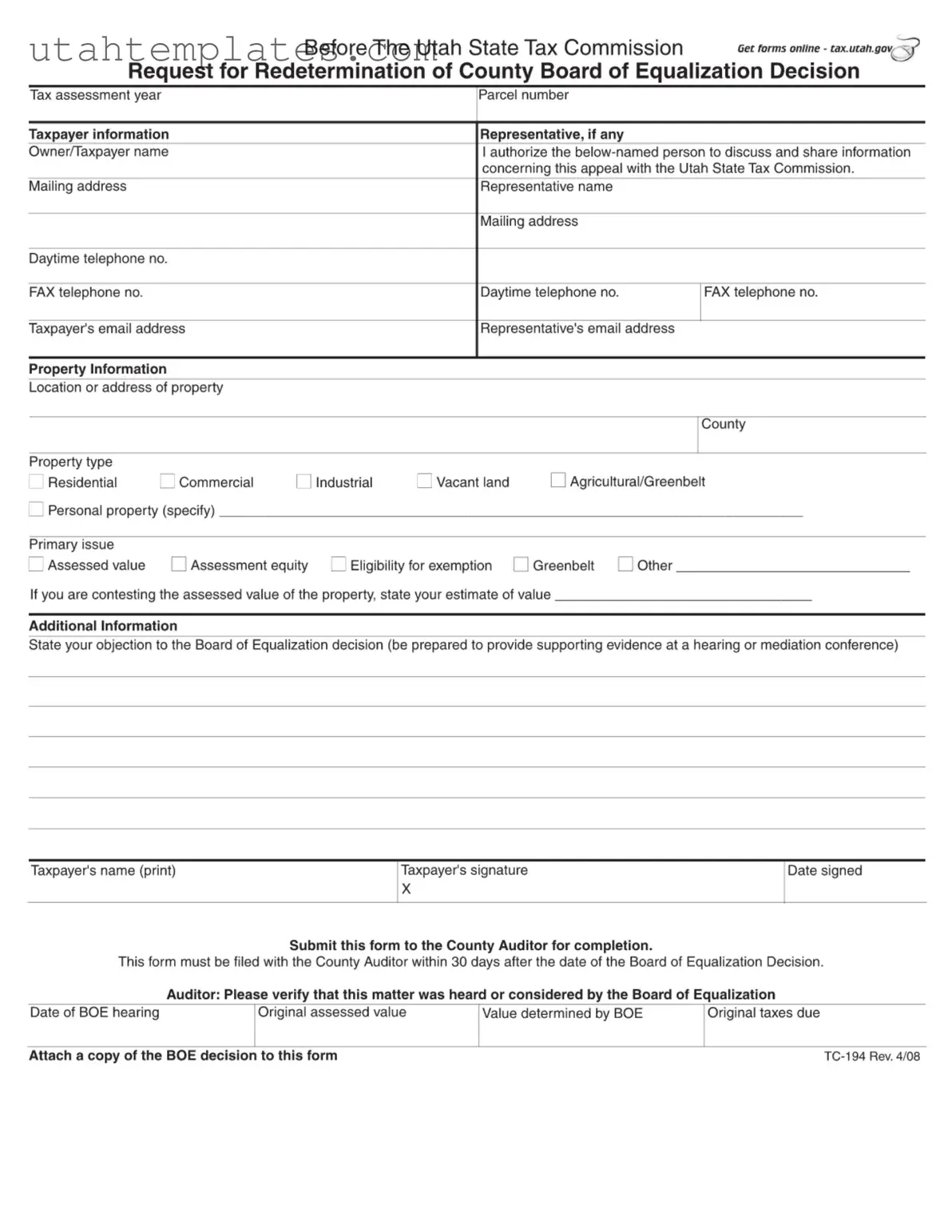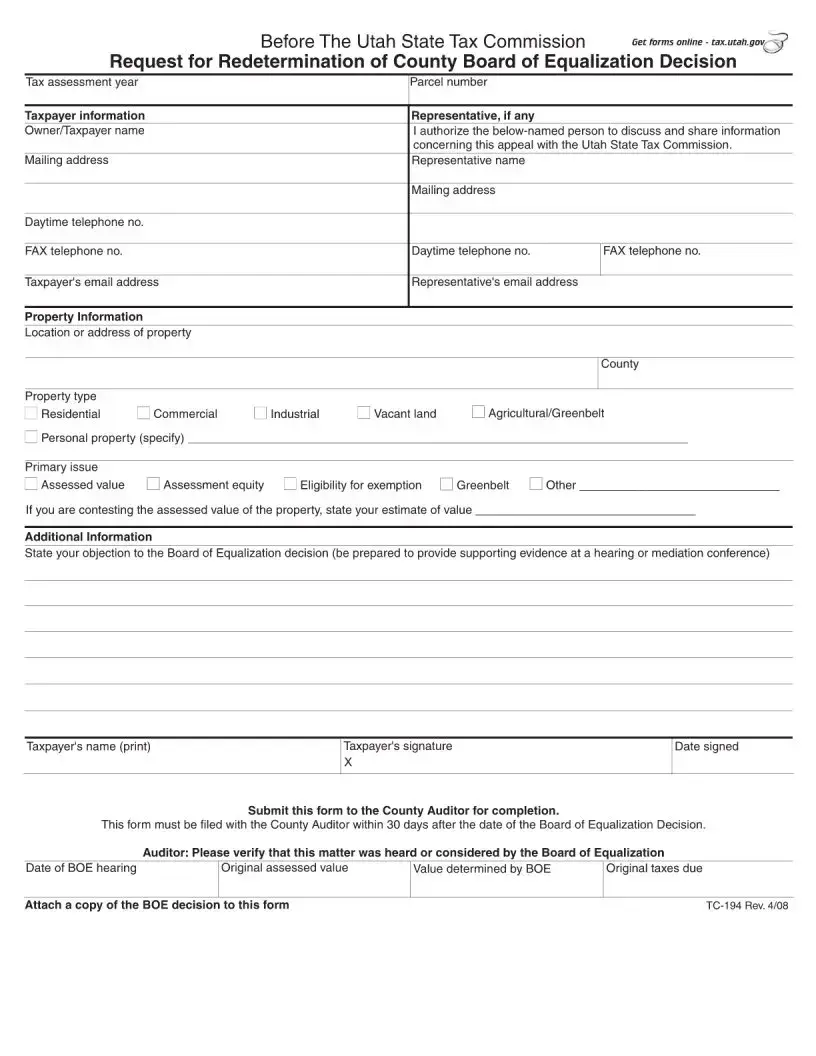The TC-194 form is a crucial document used by taxpayers in Utah who wish to formally contest a decision made by the County Board of Equalization regarding property tax assessments. This form serves as a request for redetermination and must be submitted to the County Auditor within 30 days of the Board's decision. It collects essential information about the taxpayer, including their name, contact details, and the specifics of the property in question, such as its location, parcel number, and type. Taxpayers can indicate whether they are contesting the assessed value, assessment equity, eligibility for exemption, or other related issues. The form also allows for the designation of a representative to discuss the appeal with the Utah State Tax Commission. Additionally, it requires the taxpayer to provide their estimate of the property's value if contesting the assessment and to articulate their objections to the Board's decision. Supporting evidence must be prepared for any hearings or mediation conferences that may follow. The TC-194 form is an essential tool for ensuring that taxpayers have a fair opportunity to challenge property assessments that they believe are incorrect or unjust.

